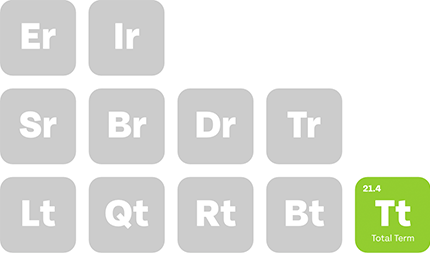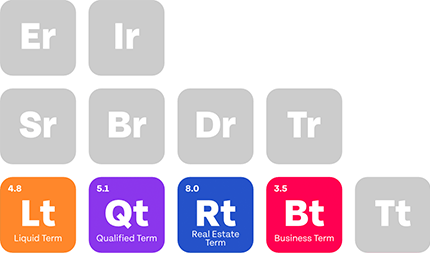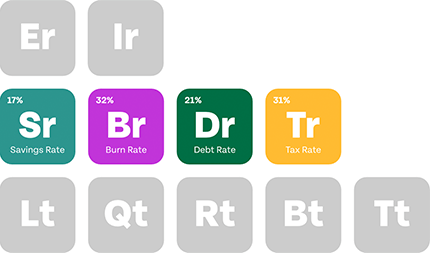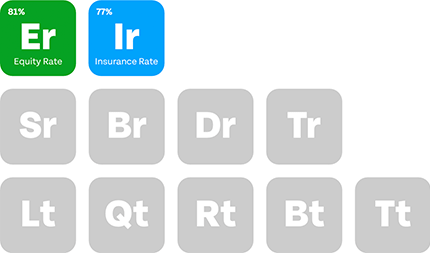When you become an anesthesiologist, you’re no stranger to protecting the lives of your patients and those around you. What you might not realize is that just as their physical well-being is at stake, so is your financial health.
Competitive salaries and attractive benefits packages have made anesthesiology one of the most desirable careers in recent years. But many physicians are beginning to realize that anesthesiologist malpractice insurance costs are rising rapidly, cutting deeper into their financial stability and long-term planning.
Key Takeaways
- Anesthesiologist malpractice insurance cost is a non-negotiable expense that affects financial stability and long-term planning.
- Annual anesthesiologist malpractice insurance costs can range from $5,000 to $80,000, depending on multiple risk factors.
- Rising anesthesiologist malpractice insurance costs make financial planning essential to maintain income stability and protect your financial future.
- Lowering anesthesiologist malpractice insurance costs can include: shopping around for lower insurance premiums, joining a group practice, and working with a financial advisor.
Malpractice lawsuits are expensive, demoralizing, and they can come out of nowhere. Even if the lawsuit is completely groundless, the emotional, professional, and financial devastation it causes is enough to destroy a life. The legal risk inherent to being an anesthesiologist is the primary reason malpractice insurance is a necessary part of protecting your career and shielding yourself from high anesthesiologist malpractice insurance costs.
Table of Contents
Understanding Anesthesiologist Malpractice Insurance Cost and Its Impact on Finances
Malpractice insurance is a non-negotiable, “what if” scenario. For medical professionals, it is an important consideration. As demand for anesthesiologists has grown, malpractice insurance costs have also climbed steadily. And they continue to rise, taking an ever-increasing bite out of your take-home pay.
Whether you’re a new physician just getting started in the field or a seasoned professional with years of experience under your belt, it’s essential to understand how anesthesiologist malpractice insurance costs factor into your overall financial plan. The health of your financial future and your retirement savings may depend on it.

Malpractice Insurance Premiums for Anesthesiologists
Malpractice insurance costs for anesthesiologists vary based on location, claims history, and practice setting:
- Location: Location is an important consideration because some states have more anesthesiologists and higher malpractice insurance premiums than others. Annual malpractice insurance costs for physicians in California, for example, can range from $20,000 to $80,000 per year. In a low-risk state like Wyoming, however, anesthesiologist malpractice insurance costs average $16, 295.
- Claims History: Insurance premiums will go up if you have a history of malpractice claims or lawsuits filed against you.
- Practice Setting: Anesthesiologists in higher-risk hospital or medical practice settings will pay more for insurance than those working in outpatient clinics or private practice settings.
Malpractice insurance comes out of your gross earnings, long before you see any of your anesthesiologist salary. If you’re an anesthesiologist with an annual salary of $400,000 per year, but you’re paying $50,000 in malpractice insurance, your income is only $350,000 when you get your paycheck.
It’s easy to see how the high cost of malpractice insurance can quickly devastate a financial plan if premiums continue to rise in the years ahead. As an anesthesiologist, you may be forced to make some hard choices in order to stay within your budget. You may have to cut spending, delay big purchases, or put off retirement. That’s why it’s so important to consider this expense when making long-term financial plans.

Factors That Influence Anesthesiologist Malpractice Insurance Cost
Factors That Influence Anesthesiologist Malpractice Insurance Cost
Every anesthesiologist’s malpractice insurance premium is unique. Several key factors determine how much you’ll pay each year, and understanding them helps you anticipate expenses and identify ways to manage costs more effectively.
- Geographic Location
Where you practice has one of the largest effects on your premiums. States with higher rates of medical litigation—such as New York, Florida, and California—carry higher malpractice insurance costs. In contrast, states with fewer claims and stronger tort reform laws, like Minnesota or Wisconsin, often offer lower average premiums.
- Claims History
A past malpractice claim, even one that’s dismissed, can significantly increase your premium. Maintaining a clean professional record and practicing consistent risk management are among the best ways to keep your anesthesiologist malpractice insurance cost low over time.
- Specialty and Case Complexity
Anesthesiologists working in higher-risk subspecialties, such as cardiac or obstetric anesthesia, tend to face steeper premiums due to the complexity of their cases. Outpatient and pain management specialists, on the other hand, often enjoy lower costs because their cases typically involve fewer critical emergencies.
- Practice Type and Setting
Hospital-based anesthesiologists often pay more for coverage because of exposure to emergency and trauma cases. Independent or outpatient practitioners may see lower costs but must purchase their own policies directly, without employer contributions.
- Employment Arrangement
Employed anesthesiologists may receive malpractice insurance as part of their benefits package, which reduces personal expense but may offer less flexibility. Self-employed physicians are fully responsible for their own policies, giving them more control over coverage but also greater financial responsibility.
Understanding these factors allows anesthesiologists to take a proactive approach: evaluating where they can mitigate risks, manage costs, and align their coverage with their professional goals.
The next step is knowing how to manage and reduce those expenses through strategic planning.
Strategies to Manage Malpractice Insurance Cost
Fortunately, there are things you can do as an anesthesiologist to reduce your malpractice insurance cost and protect your salary. Let’s look more closely at some of these strategies.
- Shop and Negotiate: Comparison shop and negotiate your policy terms. This step alone can save you thousands of dollars per year.
- Group Practice: If possible, you may be able to join a larger group practice. Group practices can qualify for lower malpractice insurance premiums based on economies of scale.
- Budget for It: Make sure to set aside a portion of your budget specifically for malpractice insurance costs. Don’t let a spike in your annual premium derail your financial plan.
How to Choose the Right Malpractice Insurance Policy
Once you understand the factors influencing anesthesiologist malpractice insurance cost, the next step is selecting a policy that balances protection and affordability. Here’s what to look for when evaluating coverage options:
- Policy Type: Claims-Made vs. Occurrence
Claims-Made Policies cover incidents only if both the event and the claim occur while the policy is active. They’re typically cheaper upfront but require tail coverage if you switch jobs or retire.
Occurrence Policies cover any incident that takes place during the policy period, even if the claim is filed years later. They cost more initially but provide lasting protection.
- Coverage Limits
Typical malpractice insurance limits are around $1 million per claim and $3 million per year, but these vary by state and hospital system. Higher limits mean higher premiums but also greater protection in high-risk specialties or locations.
- Tail Coverage
If you have a claims-made policy, purchasing tail coverage ensures that claims filed after you leave a position or retire are still covered. While tail coverage adds to your anesthesiologist malpractice insurance cost, it’s essential for long-term security.
- Legal Defense and Support
Choose an insurer that provides specialized legal defense for anesthesiology-related claims. Expert representation can be the difference between quick resolution and prolonged litigation.
- Insurer Reputation and Financial Strength
Look for insurers with strong financial ratings (A or higher from A.M. Best) and a reputation for supporting physicians through claims. A stable insurer ensures reliable protection for the long run.
Selecting the right policy isn’t just about finding the lowest premium—it’s about ensuring consistent, comprehensive protection that safeguards both your practice and financial well-being.
Work with a Financial Advisor
Another important strategy is to work with a financial advisor who has experience working with medical professionals.
Our advisors at Physicians Thrive can help you:
- Maximize your anesthesiologist salary
- Manage your anesthesiologist malpractice insurance costs effectively
- Create a detailed financial plan
- Track your financial plan progress
Working with a financial advisor who understands and specializes in working with doctors can make a big difference. Advisors who focus on working with the medical community have experience and know the unique challenges that anesthesiologists face. They can provide guidance on how to manage malpractice insurance costs and other considerations within your overall financial plan.
Tax Considerations for Anesthesiologist Malpractice Insurance Cost
The good news: malpractice insurance premiums are generally tax-deductible for physicians. Whether you’re self-employed or part of a group practice, these premiums can often be listed as a business expense.
- Independent Contractors: Can deduct the full premium on Schedule C.
- W-2 Employees: Should confirm whether premiums are employer-paid or eligible for itemized deductions.
Always consult a financial advisor or tax professional to ensure you’re maximizing your deductions legally and strategically.
Bottom Line: Understand and Control Your Anesthesiologist Malpractice Insurance Cost
Malpractice insurance is a significant expense. It’s a non-negotiable cost that has a direct impact on an salary. The rising cost of insurance is one reason why it’s so important for you to take control of your financial future. You need to understand how anesthesiologist malpractice insurance costs affect your financial plan and long-term goals and work with a financial advisor to build a solid financial plan.
It’s critical to make sure the rising costs of insurance do not derail your long-term financial goals. Partner with a financial advisor who knows and understands the medical field to develop a smart financial strategy today. Contact Physicians Thrive today.








































